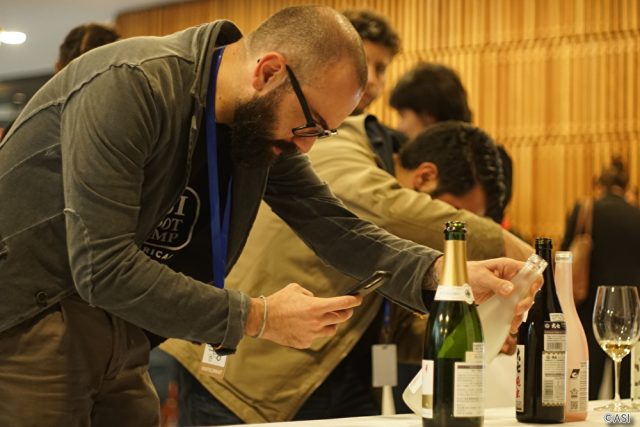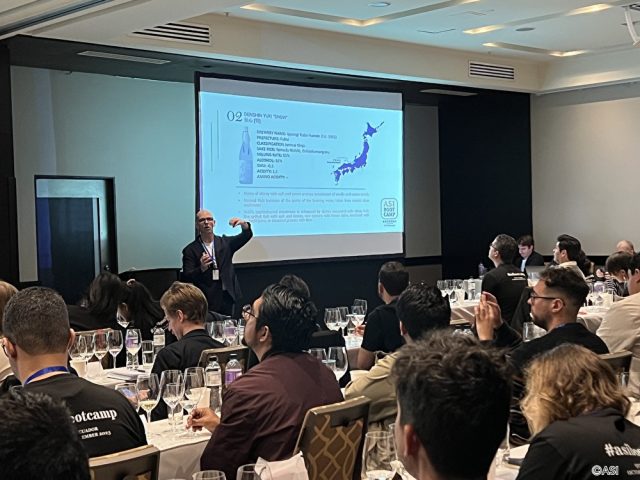This website uses cookies so that we can provide you with the best user experience possible. Cookie information is stored in your browser and performs functions such as recognising you when you return to our website and helping our team to understand which sections of the website you find most interesting and useful.
South American drinks professionals educated on sake in Ecuador
International sommeliers attended an October masterclass as the Japan Sake and Shochu Makers Association targets an untapped market.

The Japan Sake and Shochu Makers Association (JSS) continued its programme of international education last October with its latest event in Quito, Ecuador. Partnering with the Association de la Sommellerie Internationale (ASI) and the Ecuadorian Sommelier Association, the JSS educated 46 wine professionals from 26 countries at the masterclass on 31 October.
Although it is not a leading sake-consuming bloc, the inaugural masterclass in Latin America recognised great progress made in exports to the region. Between 2013 and 2022, exports to Latin America tripled, indicating plenty of potential for future growth. Latin America is already showing signs of an appetite for sake, for instance in Quito’s fine dining Japanese eateries or the increased popularity of Nikkei, a fusion cuisine that blends local and Japanese foods.
Against this backdrop, Quito was selected for a comprehensive masterclass on sake and its pairing opportunities. The event formed part of the ASI’s bootcamp training programme, an intensive three days of training and tasting for an international cohort of sommeliers.
As part of the programme, both young sommeliers and experienced professionals were on hand. The tutors included Pascaline Lepeltier and Veronique Rivest, former best sommelier award winners for France and Canada respectively. The host for the event, however, was Michael Tremblay, an international sake judge and co-author of the award-winning book Exploring the World of Japanese Craft Sake: Rice, Water, Earth.
Tremblay guided participants through the processes used to create sake, offering a full view of the historic industry’s practices. However, given the background of the attendees, there was a particular focus on food pairings and service options.

The masterclass devoted significant time to sake’s umami qualities. The savoury flavour originates from amino acids, and sake usually contains five times as many of these compounds as a white wine. It therefore opens new possibilities and challenges compared to traditional wine pairing. In particular, Tremblay explained how the glutamates in sake can match well with foods rich in inosinic acid, such as mackerel, chicken and pork.
On an even more precise level, Tremblay explored the interactions between sake and fish, since both Japan and Latin America produce globally renowned fish dishes. He proposed that the pairing works so well because fishy aromas come from an interplay of iron and sulfites in a drink and the fatty acids in the fish. In order to preserve its quality, sake is low in both iron and sulfites and therefore fishy aromas are not an issue with the drinks.
Tremblay then guided the participants through serving temperatures. In Japan, the service temperature of sake is bound to tradition, with different expressions served anywhere between 5°C and 55°C. Each level has its own name –for instance, 5°C is called ‘snow’ while 30°C is called ‘sunny’. However, he was keen to stress it is not merely a tradition to observe. The temperature of a sake can affect its taste: as the temperature rises, so does the perceived umami and sweetness.
Though he acknowledged Latin America poses challenges for Japanese sake, especially in competition with other beverages, Tremblay believes that the event was a worthwhile mission to the nascent market.
“For most [of the attendees] learning that sake is so versatile and can complement so many different cuisines was eye-opening,” said Tremblay. As an eye-opening venture, it would have been impossible to introduce the beverage comprehensively and, indeed, several participants commented that they would have liked to have spent more time learning about sake.
However, given the time constraints, the sake expert was happy with the progress. “Having so many up-and-coming sommeliers and veteran sommeliers in one place was a great opportunity,” explained Tremblay. “This was a great opportunity to light a spark in their sake interest.”

